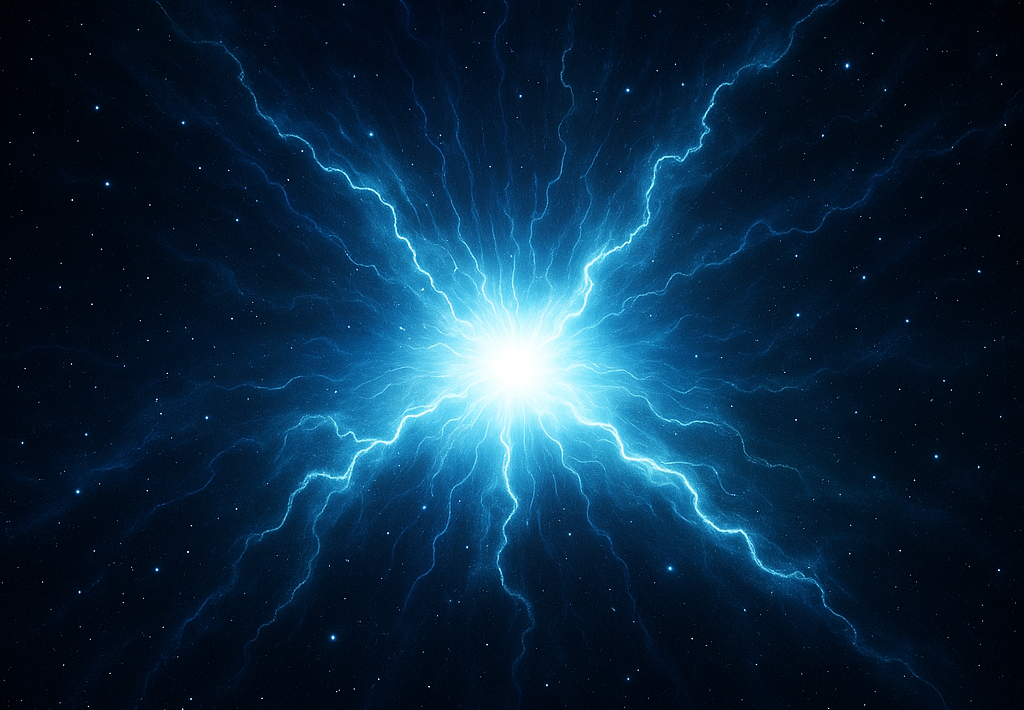String Theory Offers New Explanation for Dark Energy Through a Radical Redefinition of Space-Time
Physicists propose a non-commutative model of space-time that may bridge the quantum world and the expanding universe
In a bold theoretical leap, physicists have proposed a new model of space-time rooted in string theory that could offer a revolutionary explanation for one of the greatest mysteries in cosmology: dark energy. Their hypothesis suggests that, at unimaginably small scales, space and time may not behave the way we intuitively understand them. Instead, they argue, space-time is non-commutative—a property that could be the key to unlocking the secrets of the universe’s accelerating expansion.
This model could help bridge the gap between quantum mechanics and cosmology, and it has already made a startling prediction: that dark energy, the elusive force thought to be accelerating the expansion of the universe, should slowly decrease over time. Intriguingly, this theoretical forecast aligns with recent observational data from the Dark Energy Spectroscopic Instrument (DESI).
Rethinking the Fabric of the Universe
In classical mathematics, operations like addition are commutative—2 + 3 is the same as 3 + 2. But quantum physics often defies such simplicity. In quantum mechanics, the order in which measurements are made—say, position followed by velocity versus velocity followed by position—can yield different outcomes. This non-commutative behavior suggests that the fabric of space and time itself may be fundamentally quantum in nature.
The new model extends this idea to the geometry of space-time, implying that its structure at the smallest scales—close to the Planck length—is not smooth but exhibits quantum fluctuations. According to string theory, these fluctuations can naturally generate a form of energy that permeates space and causes it to stretch faster and faster—a phenomenon known as cosmic acceleration.
“Space and time are not absolute and smooth but have a grainy, quantum structure that affects how they evolve,” said physicist Michael Kavic, one of the study’s co-authors. “That structure may hold the key to understanding dark energy.”
A Quantum Connection to Cosmic Expansion
The new model doesn’t just provide an abstract mathematical framework—it delivers predictions. It suggests that dark energy is a direct result of the quantum behavior of space-time and that its density should slowly decrease over time. This stands in contrast to the prevailing view in quantum field theory, which treats dark energy as a constant vacuum energy—unchanging and uniform across the cosmos.
This distinction is crucial because DESI, one of the most advanced tools for studying the expansion of the universe, has begun to uncover evidence that the dark energy density might indeed be changing over time. If confirmed, this observation would be a major blow to the Standard Model of cosmology and a rare win for string theory, which has long struggled to make testable predictions.
“Viewed through the lens of our work, you could think of the DESI result as the first observational evidence supporting string theory and perhaps the first observable consequences of quantum gravity,” said Kavic in an interview with Live Science.
Where Theory Meets Experiment
For now, the findings remain theoretical, but the researchers are already laying the groundwork for experimental validation. They propose tabletop experiments that could detect quantum interference patterns expected from a non-commutative model of space-time—patterns that would be impossible under conventional quantum mechanics but expected in a quantum gravity framework.
“There are many implications of our approach to quantum gravity,” said co-author Djordje Minic. “If space-time is truly non-commutative, we should see evidence of this in very precise interference experiments—subtle but measurable deviations from the norm.”
These experiments could, for the first time, allow physicists to probe the effects of quantum gravity not in distant galaxies or high-energy particle accelerators, but in controlled laboratory environments. If successful, they would mark a profound shift in our understanding of the universe—from the tiniest quantum scales to the vastness of cosmic expansion.
A Turning Point for Fundamental Physics?
The idea that dark energy may not be a static background force but a dynamic consequence of quantum space-time challenges decades of assumptions in physics. By linking quantum behavior at the Planck scale to observations across billions of light-years, this model attempts what many theories have failed to do: connect the smallest and largest structures of the universe with a single, coherent framework.
Though far from definitive, the convergence of theory and observation suggests that the universe may be whispering its secrets—through both the subtle dance of particles in a lab and the silent drift of galaxies in deep space.
If the model continues to hold up under scrutiny, it may not only illuminate the nature of dark energy but also offer the first concrete signs that string theory—long criticized for its lack of empirical support—might finally be on the path to testability.
This article contains AI generated content using information from these sources:
Interesting Engineering - https://interestingengineering.com/science/string-theory-dark-energy-driving-universe-expansion
